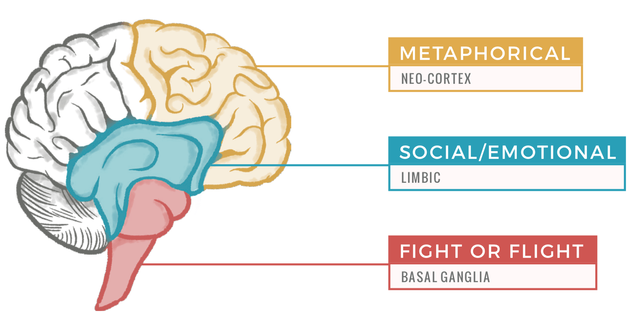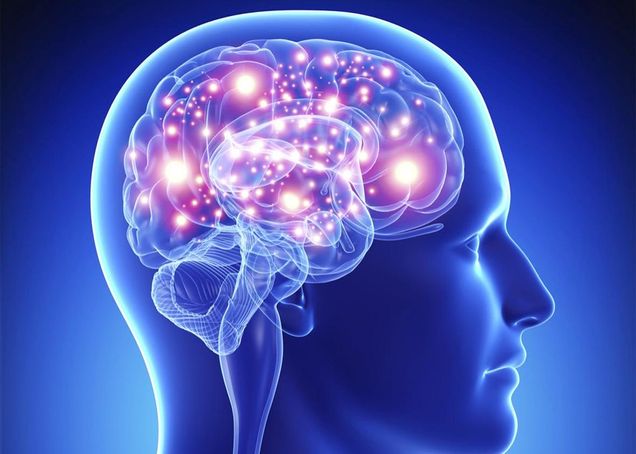The Neurobiology of Trauma
I believe that addressing the neurobiological aspect of trauma is vital in understanding the negative effects of trauma. Firstly, trauma is a term used to describe the experience or circumstances that occur which in turn have a negative effect on an individual. This can be quite devastating as one would imagine. Some may experience trauma on a daily basis while others may not. Regardless of the number of occurrences, trauma remains distressing and taxing for all that experience it. How a person responds can vary person to person, they may be in denial of the situation, they may show symptoms of depression, anger, anxiety, etc. There is no one clear set of boxes that a person must check off in order to state that they’ve experienced trauma.
But what causes all of these symptoms to occur in the first place? There are various areas within the brain that tend to be the most affected by traumatic events. This includes the prefrontal cortex, amygdala, thalamus, and hippocampus. One of the issues that tends to come up when talking about trauma is how complex it is. Paul MacLean, a renowned physician and neuroscientist, explained the brain as being separated into three separate brains. Looking at his work can help us better explain trauma in terms of neurobiology. MacLean coined the term “triune brain”; which consisted of the reptilian brain, mammalian brain, and cerebral cortex. The reptilian brain includes the brain stem, cerebellum, and basal ganglia. This is where our autonomic nervous system comes into play, essentially holding all of our autopilot functioning like breathing, blood flow, etc. The mammalian brain is where one would find the thalamus, hypothalamus, amygdala and hippocampus. Otherwise known as the limbic system. This area of the brain is heavily involved in memory and responses. The limbic system connects with our reptilian brain to churn out an appropriate response. This connection is where our fight, flight, or freeze responses would occur. Then we have the cerebral cortex, this is where the right and left hemispheres, and the medial and dorsolateral prefrontal cortexes of the brain are located. These are the outermost layers of our brains, where our “higher-thinking” comes from. Things like intelligence, planning, organization, language processing/learning are all functions found within the cerebral cortex. Each of these “three brains” as outlined by MacLean are involved in how we respond to traumatic stimuli. 
One major argument against this model is it focuses on a hierarchy of the brain. The idea being that the brain developed overtime as a result of evolution. Looking at the outline it would consist of the reptilian brain being developed first, then the mammalian brain and finally the cerebral cortex. Rather than the brain being triune, it has been suggested that it is adaptive and uses “adaptive prediction resulting from interdependent brain networks using interoception and exteroception to balance current needs, and the interconnections among homeostasis, allostasis, emotion, cognition, and strong social bonds in accomplishing adaptive goals” (Steffen et al., 2022). I do still believe that the triune brain model allows us to easily look at how the brain reacts to trauma and stressful situations. Which is why MacLean’s theory is still widely discussed today. Regardless of whether or not you believe in a more adaptive or triune layout of the brain, the information and things that are happening during stressful events remains the same.
I would also argue that if we were to use MacLean’s model to address a specific situation we would be able to do so in a way that was easily understandable to fellow listener’s. For example, let’s say we live in a tropical climate like Florida, we’re halfway into a walk in the forest when we hear a rustle and see quick movement by our feet. Our brain perceives this event to be dangerous, there could be a snake nearby. The sensory information that we internalized, the noises and brief visuals were processed and sent to our thalamus and then relayed to the amygdala to rule out whether or not we were in a safe or unsafe situation. In our case it was deemed to be unsafe given prior knowledge of our surroundings. Due to our situation being seen as dangerous our hypothalamus then releases adrenaline and norepinephrine to trigger our fight, flight, or freeze response. Once that event occurs our cerebral cortex receives this information from the limbic system to create a memory based on the event. That way if another event similar to that one occurs the body will instantly flee, fight, or freeze. The information gets stuck. Sometimes this can be useful, like in this example where you would need to do something on the spot to avoid getting bit by a potential snake. On the other hand, this can also be detrimental to the individual in situations such as a Marine coming home after experiencing war trauma. Trying to integrate back into civilian life can be difficult when dealing with trauma related to war. Using this knowledge we can relate it back to real world situations to try and come up with solutions to address these negative effects.
Fortunately there are various options for therapy available to those who have experienced trauma. There is exposure therapy, EMDR, Yoga therapy, and much more. In having so many options available to address trauma, individuals are able to pick treatment best suited to their needs. Even within exposure therapy there are branches of different forms ranging from imaginal exposure, in vivo exposure, and flooding. The treatment that is ultimately chosen depends on the individual and what they’re comfortable with. What is very clear is that the neurobiology of the brain, what is happening behind the scenes, is equally as important and essential to understand.

Sources:
Rousseau, D. (2022). Module 3: Neurobiology of trauma. Retrieved from https://learn.bu.edu/bbcswebdav/courses/22sprgmetcj720_o2/course/module3/allpages.htm.
Steffen, P. R., Hedges, D., & Matheson, R. (2022, April 1). The brain is adaptive not triune: How the brain responds to threat, challenge, and change. Frontiers in psychiatry. Retrieved April 24, 2022, from https://www.ncbi.nlm.nih.gov/pmc/articles/PMC9010774/